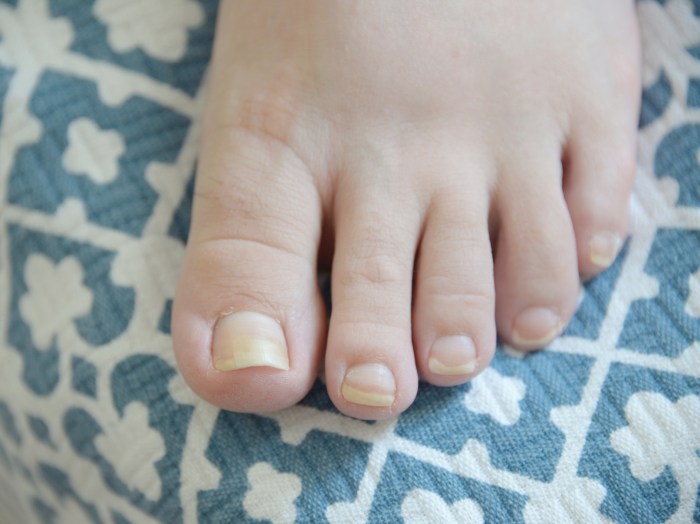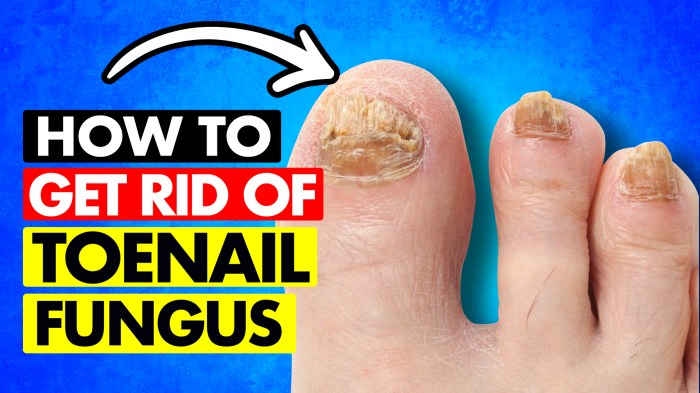DIY Foot Fungus Treatment: Home Remedies and Prevention can be a great way to manage this common condition. Foot fungus, also known as athlete’s foot, is a fungal infection that affects the skin on the feet. It is often caused by moisture and warmth, which create an ideal environment for fungi to thrive. Foot fungus can cause itching, redness, scaling, and even blistering. While there are many over-the-counter and prescription medications available to treat foot fungus, some people prefer to try home remedies first.
This guide will explore various DIY foot fungus treatments, including essential oils, apple cider vinegar, and baking soda. We’ll also delve into the importance of prevention, discuss when to seek medical attention, and address common myths about foot fungus.
DIY Foot Fungus Treatments
Foot fungus, also known as athlete’s foot, is a common fungal infection that affects the skin on the feet. It can cause itching, scaling, redness, and even blisters. While there are many over-the-counter and prescription medications available to treat foot fungus, some people prefer to try home remedies first. This section will explore some common DIY foot fungus treatments and their potential effectiveness.
Common Home Remedies for Foot Fungus
Many home remedies are believed to be effective in treating foot fungus. These remedies can be categorized based on their method of action:
Antifungal Agents
These remedies directly target and kill the fungus causing the infection.
- Tea Tree Oil: Tea tree oil has natural antifungal properties. Dilute a few drops of tea tree oil in a carrier oil like coconut oil and apply it to the affected area.
- Apple Cider Vinegar: Apple cider vinegar is known for its antifungal and antibacterial properties. Soak your feet in a mixture of apple cider vinegar and water for 15-20 minutes daily.
- Garlic: Garlic contains allicin, a natural antifungal compound. Crush a few cloves of garlic and apply the paste to the affected area.
- Oregano Oil: Oregano oil contains carvacrol, a potent antifungal agent. Dilute a few drops of oregano oil in a carrier oil and apply it to the affected area.
Anti-inflammatory Agents
These remedies help reduce inflammation and soothe the irritated skin.
- Baking Soda: Baking soda has anti-inflammatory properties and can help absorb moisture. Add baking soda to a warm bath and soak your feet for 15-20 minutes.
- Aloe Vera: Aloe vera gel has anti-inflammatory and soothing properties. Apply aloe vera gel directly to the affected area.
Drying Agents
These remedies help create a dry environment that is unfavorable for fungal growth.
- Salt: Salt can help absorb moisture and create a dry environment. Add salt to a warm bath and soak your feet for 15-20 minutes.
- Cornstarch: Cornstarch can help absorb moisture and reduce friction. Sprinkle cornstarch on your feet, especially between your toes.
Comparison of DIY Foot Fungus Treatments
The effectiveness, safety, and potential side effects of different DIY treatments can vary. The following table provides a comparison of some common remedies:
| Treatment | Effectiveness | Safety | Potential Side Effects |
|---|---|---|---|
| Tea Tree Oil | Moderate | Generally safe when diluted | Skin irritation, allergic reactions |
| Apple Cider Vinegar | Moderate | Generally safe for short-term use | Skin irritation, dryness |
| Garlic | Limited evidence | Potentially irritating | Skin irritation, burning sensation |
| Oregano Oil | Limited evidence | Potentially irritating | Skin irritation, allergic reactions |
| Baking Soda | Limited evidence | Generally safe for short-term use | Skin dryness, irritation |
| Aloe Vera | Limited evidence | Generally safe | Minimal side effects |
| Salt | Limited evidence | Generally safe for short-term use | Skin dryness, irritation |
| Cornstarch | Limited evidence | Generally safe | Minimal side effects |
Prevention of Foot Fungus

While treating an existing foot fungus infection is important, preventing it in the first place is even better. By following some simple hygiene practices and taking precautions, you can significantly reduce your risk of developing athlete’s foot or other fungal infections.
While DIY foot fungus treatments can be tempting, it’s crucial to consult a doctor before trying anything new. Certain medications, like theophylline , can interact with antifungal treatments, so it’s essential to discuss your options with a healthcare professional to ensure safe and effective treatment for your foot fungus.
Maintaining Good Foot Hygiene
Keeping your feet clean and dry is the most important step in preventing foot fungus. Moisture and warmth create the perfect environment for fungi to thrive. Here are some tips to maintain good foot hygiene:
- Wash your feet daily with soap and water, paying attention to the spaces between your toes.
- Dry your feet thoroughly, especially between your toes, after showering or bathing. You can use a towel or a hairdryer on a low setting.
- Change your socks daily, especially if you sweat a lot. Choose socks made of breathable materials like cotton or moisture-wicking fabrics.
- Avoid wearing the same shoes every day. Give your shoes a chance to air out between wearings.
- Wear sandals or flip-flops in public showers or locker rooms. This helps to minimize contact with fungal spores.
Preventing Foot Fungus in Daily Life
Besides good hygiene, there are several other things you can do to prevent foot fungus:
| Prevention Method | Effectiveness | Ease of Implementation |
|---|---|---|
| Wearing breathable shoes | High | Easy |
| Avoiding sharing towels and shoes | High | Easy |
| Keeping your feet dry, especially after swimming or showering | High | Easy |
| Treating any existing skin conditions on your feet | Moderate | Moderate |
| Using antifungal powder or spray in your shoes | Moderate | Easy |
| Choosing socks made of moisture-wicking fabrics | Moderate | Easy |
When to Seek Medical Help
While most cases of foot fungus can be treated effectively with home remedies, there are instances where seeking professional medical attention is crucial. Recognizing the signs and symptoms that necessitate a visit to a doctor is essential for preventing complications and ensuring proper treatment.
Potential Complications of Untreated Foot Fungus
Untreated foot fungus can lead to various complications, some of which can be quite severe. It’s crucial to be aware of these potential risks and seek medical help if you experience any concerning symptoms.
- Spread of Infection: Foot fungus can spread to other parts of the body, particularly the nails, causing onychomycosis, a fungal infection of the nails. This can lead to thickened, discolored, and brittle nails, making them more susceptible to injury.
- Bacterial Infections: Cracks and sores caused by foot fungus can become infected with bacteria, leading to cellulitis, a serious skin infection that requires immediate medical attention.
- Pain and Discomfort: Foot fungus can cause significant pain, itching, and discomfort, making it difficult to walk or participate in daily activities.
- Impaired Mobility: In severe cases, foot fungus can lead to impaired mobility due to pain, swelling, and inflammation, limiting your ability to walk or stand for extended periods.
- Psychological Impact: The appearance of foot fungus can be embarrassing and lead to social anxiety, affecting self-esteem and quality of life.
Medical Treatments for Foot Fungus, Diy foot fungus treatment
Several medical treatments are available for foot fungus, depending on the severity of the infection and the individual’s medical history. These treatments include:
- Topical Antifungal Medications: These creams, lotions, or sprays are applied directly to the affected area and are often the first line of treatment for mild cases of foot fungus. Common examples include clotrimazole, terbinafine, and miconazole.
- Oral Antifungal Medications: For more severe or persistent cases of foot fungus, oral antifungal medications may be prescribed. These medications are taken by mouth and work by killing the fungus throughout the body. Common examples include itraconazole, fluconazole, and terbinafine.
- Laser Therapy: In some cases, laser therapy may be used to treat foot fungus. This non-invasive procedure uses a focused beam of light to destroy the fungus. It is typically reserved for cases that have not responded to other treatments.
Foot Fungus and Immune System
Your immune system plays a crucial role in protecting your body from infections, including foot fungus. It works by identifying and attacking foreign invaders like fungi, preventing them from multiplying and causing harm.
Conditions Affecting Immune System and Foot Fungus Risk
Certain conditions that weaken the immune system can increase your susceptibility to foot fungus. These conditions include:
- Diabetes: High blood sugar levels in people with diabetes can create a favorable environment for fungi to thrive. This is because fungi feed on sugar, and high blood sugar levels can make it difficult for the immune system to fight off infections effectively.
- HIV: The human immunodeficiency virus (HIV) weakens the immune system, making individuals more vulnerable to infections, including foot fungus.
- Other Immune System Disorders: Conditions like autoimmune diseases, which involve the immune system attacking healthy cells, can also compromise the body’s defense against foot fungus.
Common Myths about Foot Fungus

Foot fungus, also known as athlete’s foot, is a common fungal infection that can affect the skin on the feet. While it’s important to be aware of the risks and how to prevent foot fungus, there are also many myths and misconceptions surrounding this condition. Understanding these myths can help you make informed decisions about your foot health.
Foot Fungus is Only Contagious Through Direct Contact
It’s true that direct contact with an infected person or surface is a common way to spread foot fungus. However, it’s not the only way. Foot fungus can also spread through indirect contact, such as sharing towels, shoes, or socks. This is because the fungus can survive on these surfaces for a period of time.
Foot Fungus is Only a Problem for Athletes
While athletes are more prone to developing foot fungus due to their increased exposure to shared facilities and sweaty feet, anyone can get it. Foot fungus thrives in warm, moist environments, so anyone who wears shoes and socks for extended periods is at risk.
Foot Fungus is Not a Serious Condition
While foot fungus is usually not life-threatening, it can be uncomfortable and persistent. Left untreated, it can lead to complications such as bacterial infections, skin infections, and nail infections. In some cases, it can also spread to other parts of the body.
You Can Get Rid of Foot Fungus with Over-the-Counter Remedies
While over-the-counter antifungal medications can be effective in treating mild cases of foot fungus, they may not always be enough. In some cases, a prescription antifungal medication may be necessary.
Foot Fungus is a Sign of Poor Hygiene
While good hygiene practices can help prevent foot fungus, it’s not always a sign of poor hygiene. People with healthy immune systems can still develop foot fungus, especially if they are exposed to the fungus in a shared environment.
Treating foot fungus with home remedies can be effective, especially when used in conjunction with good hygiene practices. However, it’s important to remember that not all home remedies are created equal. Some may be more effective than others, and some may even cause side effects. If you’re considering using home remedies for foot fungus, it’s important to talk to your doctor first. They can help you determine if home remedies are right for you and can provide guidance on how to use them safely and effectively.
